When it comes to keeping chickens, many hobbyists prefer versatile breeds that are also docile and friendly. The Orpington is a bird that fits that description.
Developed in the UK, the Orpington is a dual-purpose breed, meaning it’s useful for meat and eggs. However, this bird also has a relaxed and friendly personality, making it a great choice for both beginners and experienced poultry hobbyists.
History of Orpington Chickens
The Orpington was developed in England in the 1800s, on the tail end of the British phenomenon known as “Hen Fever”. Hen Fever refers to a sudden increase in poultry–and specifically, in keeping unusual breeds.
TThe breed’s development process sounds simple: it started with crossbreeding Minorcas and Black Plymouth Rocks, two hardy breeds that are themselves good for both meat and egg production. The offspring of these crosses were then bred with Langshan birds.
Since the Langshan is a deep-bodied breed that thrives in Britain’s cold, damp climate, it was a logical choice when developing a dual-purpose breed.
Though the breed was developed in Britain in 1886, it only took breeder William Cook until 1891 to introduce the breed to America.

By showing the birds around the country, Cook was able to draw the interest of several farmers. The Orpington was especially loved by midwestern farmers, who liked the breed for its multiple uses and general toughness.
For hobby chicken keepers, much of the draw of the Orpington is the fact that it comes in many colorful varieties. Breed developer William Cook first produced the Black Orpington.
Since these birds were dark in color, Cook believed their feathers wouldn’t become discolored from exposure to Britain’s polluted air. However, after the development of the black variety, several other Orpington colors were developed.
Breed standard colors include white, black, blue, and buff, although there are many other available varieties that aren’t included as official breed standard colors.
Today, the Buff Orpington is the most popular type. While they otherwise look similar to Cook’s original Orpington, their feathers are a soft golden color.
However, as varieties developed, a few differences emerged. Namely, blue and black Orpingtons are larger, meaning they may be a better choice for keepers who want to keep meat birds. All varieties are great layers, and most Orpington hens are more than willing to sit on a nest of eggs.
Orpington Chicken Breed Standard
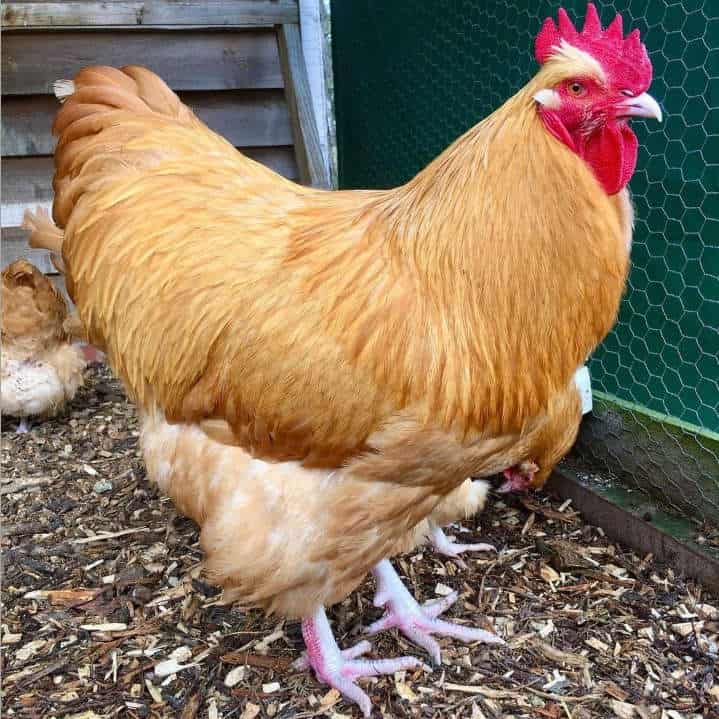
The British breed standard for the Orpington describes this chicken’s body as being “deep, broad, and cobby.” “Cobby” is an apt way to describe the Orpington’s general appearance. These are stout birds, as they were breed for both meat and egg production.
In many ways, the Orpington’s appearance matches what most people would picture when they think of a chicken–this breed has a single comb and ample neck feathering, and it also has strong legs that aren’t feathered.
Most Orpingtons have bright, bold eyes. If you’re curious about what a healthy, show-quality Orpington looks like, this video offers a great introduction.
The standard size for an Orpington is about what you’d expect for a dual-purpose bird–males are 10-14 pounds, while females can range from 7.5-10 pounds. There also is a bantam variety of the Orpington, which was developed starting in 1929.
Since these birds are about one-third of the size of a standard Orpington, they’re a good choice for poultry keepers who may be short on space but want a flock of friendly birds.
Breed standards for bantam Orpingtons are virtually identical to the standards for large-breed Orpingtons (with the notable exception of size).
Personality and Temperament
Some chicken keepers prefer to choose birds who are great for production, while others prefer a bird with a great personality. When it comes to general temperament, the Orpington is unbeatable. These birds are very calm and easy-going, and they are good birds for children, too.
The Orpington’s mellow temperament is even more apparent if you raise your flock to be comfortable around people. By regularly handling your chickens when they’re young, they will soon realize that you aren’t a threat.
Of course, if you purchase adult birds, chances are still good that they’ll come to trust you. Since Orpingtons don’t have the flightiness of some poultry varieties, they tend to have an easier time trusting people, even
Of all Orpington varieties, the buff birds tend to be the most sociable. However, all varieties tolerate handling, confinement, and general stress well. Thus, they’re especially suitable for showing, as they tend to not mind being transported or being kept in exhibition cages.
When you combine its production abilities with its attractive feathering and people-oriented demeanor, it’s easy to see why this is a breed suitable for just about every kind of chicken keeper.
Orpington Chicken Egg Laying
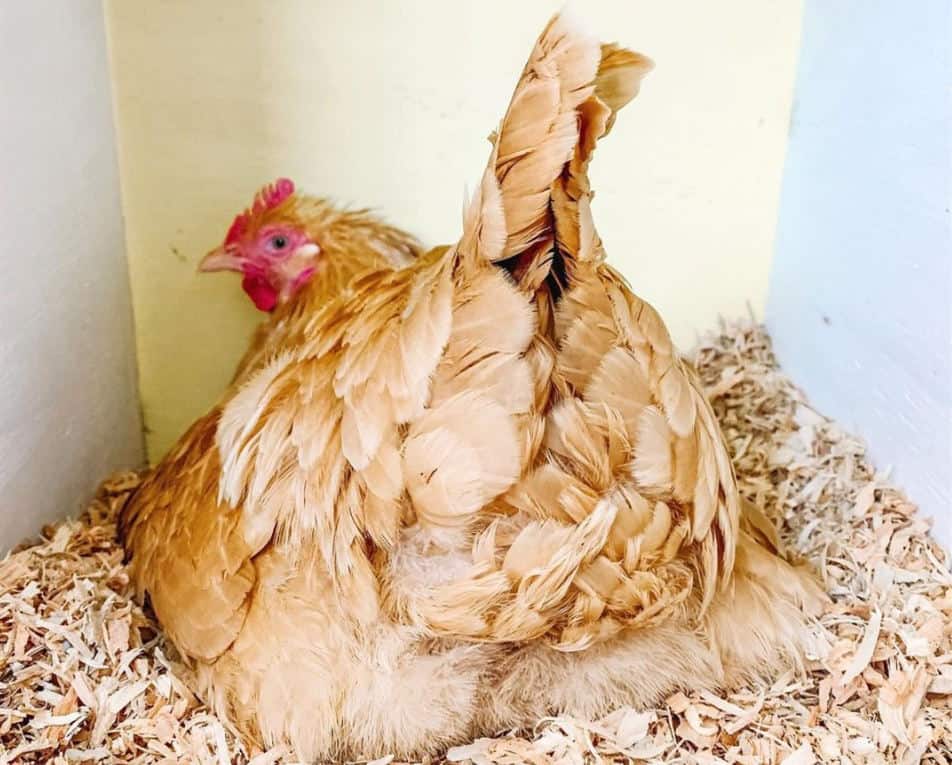
Orpingtons lay large, beautiful light brown eggs. And since they were developed as a dual-purpose breed, they have a greater laying capacity than many breeds. It’s estimated that laying hens in their prime will lay between 150-200 eggs per year.
This may not be as much as some hybrids bred specifically for eggs, but it’s plenty for many smaller chicken keepers.
While Orpingtons tend to be reliable producers, they sometimes take longer to reach maturity than other breeds. These hens can start laying at 19 weeks of age, but some take until 24 weeks.
They may not be right for you if you want birds that will start laying as soon as possible, but for many keepers, the breed’s other good qualities make them worth the wait.
If you intend to breed chickens, Orpingtons are also a great breed to start with. Hens usually make great, attentive mothers, and they typically are even willing to hatch eggs that aren’t theirs.
Health Issues and Care
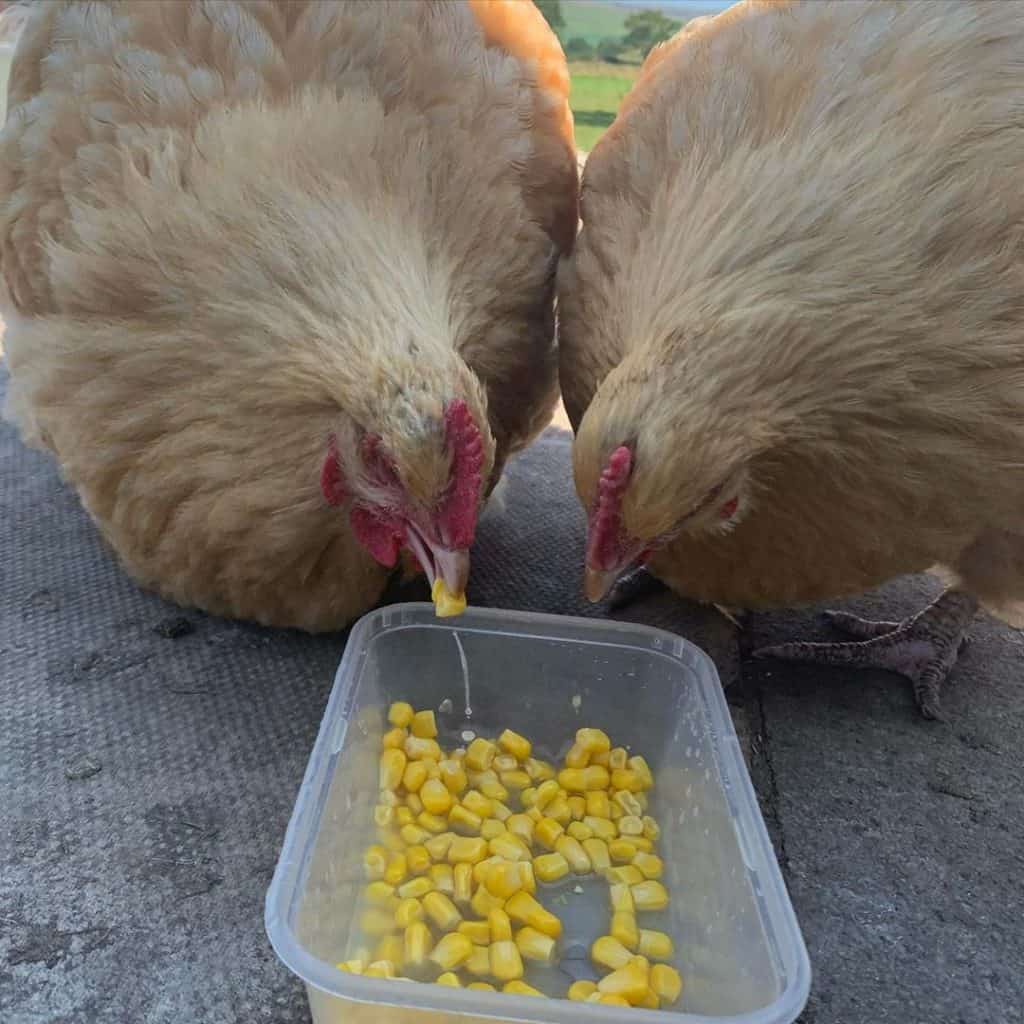
The Orpington is a very hardy breed, and it isn’t prone to many health issues. That said, since the Orpington was bred for living in the damp cold, this breed doesn’t do well in hot, humid climates.
Since they are densely feathered, they may dangerously overheat in warmer climates. If you do want to keep Orpingtons in a warmer climate, be sure that they have access to shade and fresh water and that their coop is well ventilated.
One other health issue that these birds are prone to be obesity. They are large by nature, and they tend to be relatively sedentary. Make sure that your birds aren’t overfed and that they have plenty of opportunities to exercise, and they will be much less likely to become obese.
Even though Orpingtons aren’t as active as some other breeds, it’s still important to give them space to roam. Even if your chickens aren’t free range 24/7, allowing them time outdoors is a must.
A coop with an attached run is ideal–it lets the chickens safely forage, and it protects them from predators and overexposure to sunlight.
Tips for Raising Happy Orpingtons
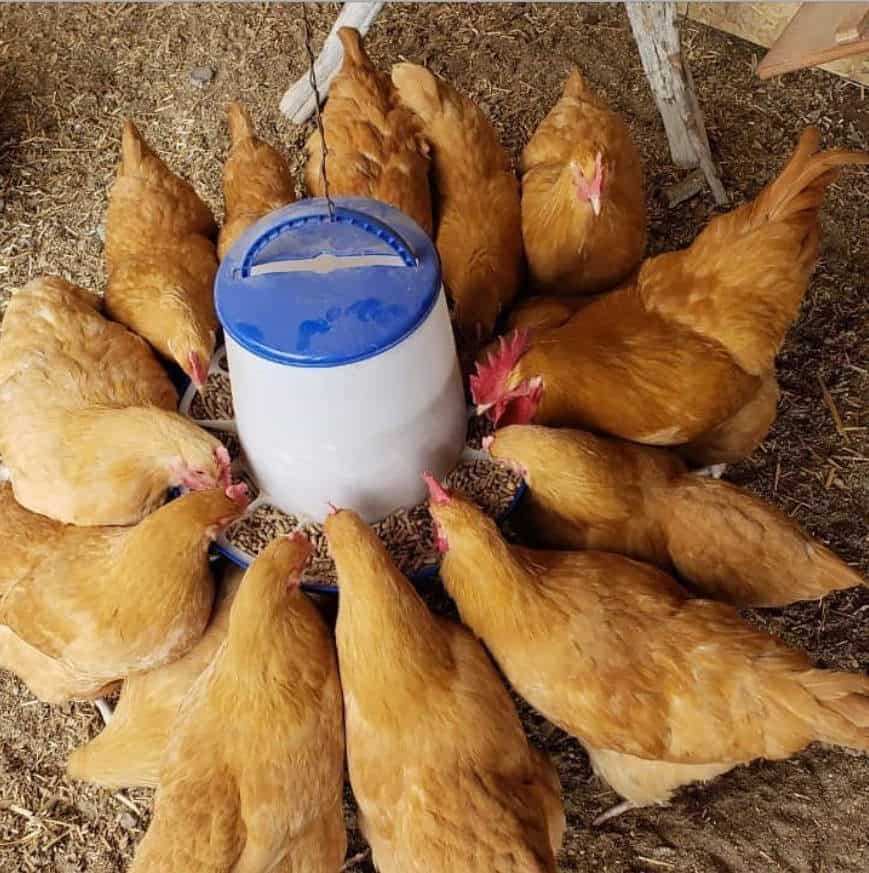
Much of the general advice offered for keeping chickens applies to almost every breed. However, when raising Orpingtons, there are a few breed-specific pieces of advice you may want to keep in mind.
Protect Them From Predators and Weather
Orpingtons aren’t the fastest-moving breed of chicken. This means that they often are more vulnerable to predators than smaller, faster-moving breeds. If you live in an area with many predators, it may not be wise to keep these birds as free-range only.
Letting them roam with supervision and/or giving them a coop with an exercise run may be safer alternatives.
Additionally, the Orpington’s fluffy, downy coat often isn’t completely waterproof. To prevent your birds from getting too chilled, be sure they have a covered coop or another shelter from the rain. Similarly, be sure they can access shade and water during hot weather.

Spend Time With Them
Many Orpingtons don’t just tolerate being held–they enjoy it. While each bird is different, many Orpingtons are very comfortable with people, and they may even walk up to you when they want to be picked up.
In order to make the most of Orpingtons’ friendliness, be sure to spend time talking to and handling them, especially when they’re young. This will result in friendly adult birds who look forward to seeing you.
Be Patient
As mentioned above, Orpingtons don’t always start laying eggs as early as some other breeds. While they were developed as a dual-purpose breed, they don’t reach maturity as fast as commercial laying or meat strains of birds. Once they do mature, Orpingtons are hardy and reliable layers in just about any climate.

In Conclusion
Whether you want to raise chickens for meat and eggs or would prefer a friendly breed that’s content being a pet, the Orpington is an excellent choice. While the breed was once considered endangered by the American Livestock Conservancy, it graduated from this listing in 2016.
This is likely due to the breed’s growing popularity with all kinds of chicken keepers. If you’re ready for a flock of sociable, easy-keeping chickens, the Orpington is worth a look.
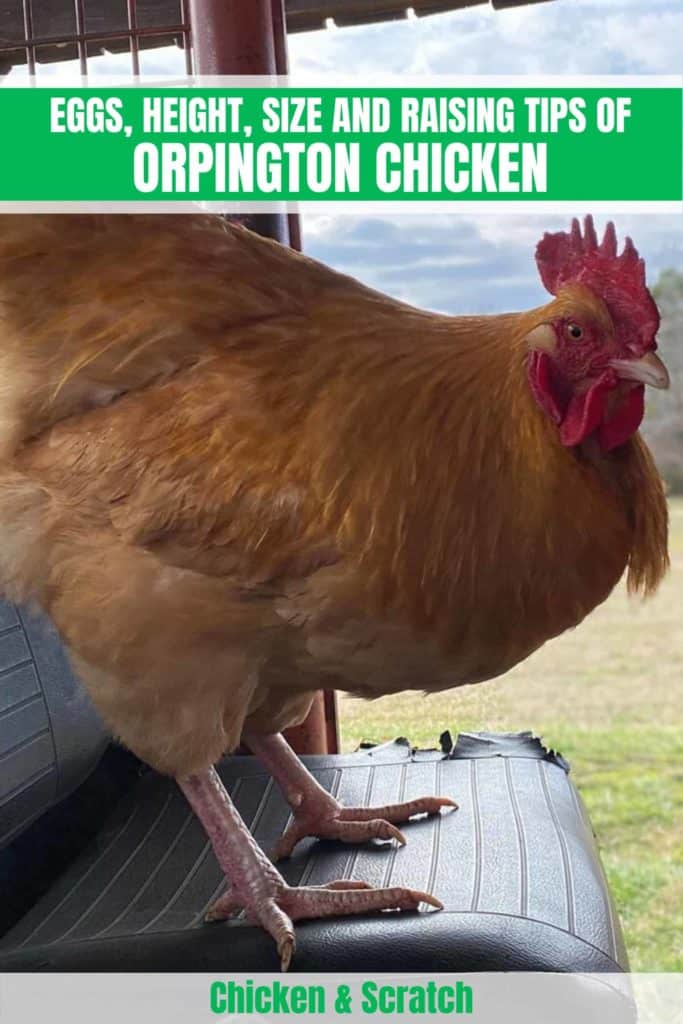

Joseph Hudson has been raising chickens for over 15 years. In 2018, he completed the Agriculture & Natural Resources program at Mt. San Antonio College. He currently raises over 1400 chickens on his 7.5-hectare farm. He keeps sharing his experience on raising healthy and happy chickens on Chicken Scratch The Foundry.









I LIKE ORPINGTONS CHICKEN BREED. I WOULD LIKE TO RARE IN MY LIFE.
THEY ARE SUPER BREED TO RARE IN MY LIFE.